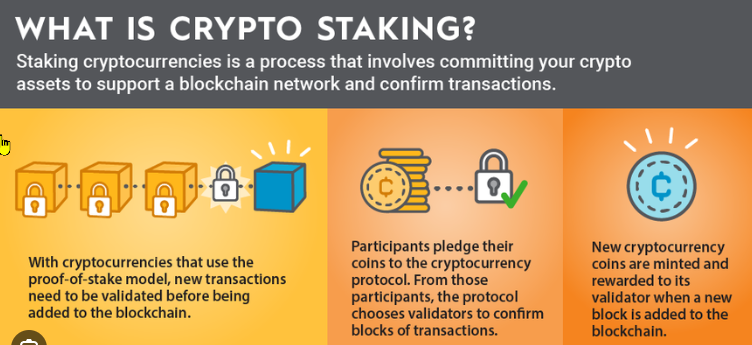The days of speculative crypto trading as the only way to grow your digital wealth are long gone. In 2025, crypto investors and enthusiasts are discovering smarter, more sustainable ways to earn passive income. Thanks to a growing ecosystem of decentralized finance (DeFi) tools, protocols, and platforms, you can now put your crypto to work and let it generate real, consistent yields.
In this step-by-step guide, we break down seven legitimate passive income strategies you can start today—with everything from staking to restaking, yield farming, lending, and beyond.
1. Staking: The Foundation of Passive Crypto Income
What it is: Staking is the process of locking up your crypto in a blockchain network to help validate transactions and secure the network. In return, you earn rewards.
Best for: Beginners to intermediate users looking for steady, low-maintenance yields.
Popular Platforms:
Ethereum (ETH) – now a proof-of-stake network post-merge
Cardano (ADA)
Polkadot (DOT)
Cosmos (ATOM)
How to get started:
Choose a staking wallet or centralized exchange that offers staking (e.g., Ledger, Coinbase, Binance).
Deposit or buy the token you want to stake.
Delegate your tokens to a validator or stake directly.
Watch your rewards accumulate over time.
Typical returns: 4% – 10% annually, depending on the network.
Bonus Tip: Avoid leaving staked assets on centralized platforms long-term unless you trust their custody model.

2. Restaking: The Next Evolution in Staking
What it is: Restaking allows you to reuse already staked tokens to secure additional networks or services, multiplying your yield potential.
Best for: Intermediate to advanced users seeking layered rewards.
Hot Project: EigenLayer on Ethereum
How it works:
Stake your ETH or liquid staking derivative (e.g., stETH from Lido).
Restake it on EigenLayer to earn additional rewards from actively validating middleware and off-chain services.
Why it’s hot in 2025: Restaking is one of the biggest narratives this year because it improves capital efficiency and lets stakers participate in more than just Ethereum’s consensus.
Caution: This is a newer concept—understand the risks of smart contracts and slashing penalties.
3. Yield Farming: High Risk, High Reward
What it is: Yield farming involves providing liquidity to DeFi protocols (like AMMs or DEXs) in exchange for rewards, usually paid in governance tokens.
Best for: Crypto-savvy users who can manage smart contract and impermanent loss risks.
Platforms to watch in 2025:
Uniswap v4
Curve Finance
PancakeSwap (BSC)
TitanFarms.win (great for launching your own farm and extremely low risk)
How to yield farm:
Pair two tokens and provide liquidity to a pool.
Stake your LP (liquidity provider) tokens into a farm.
Harvest your rewards (often weekly or daily).
Returns: Vary widely – from 10% to 300% APY, depending on the pool and token emissions.
Pro Tip: Stick to blue-chip token pairs (like ETH/USDC) to reduce volatility and impermanent loss.

4. Lending: Be Your Own Bank
What it is: Crypto lending lets you lend your tokens to other users or protocols in return for interest payments.
Best for: Conservative investors and stablecoin holders.
Top Platforms:
Aave (Ethereum, Polygon, Arbitrum)
Compound Finance
Maple Finance (for institutional-grade lending)
Venus (BSC)
Steps to start lending:
Connect your wallet to a lending protocol.
Deposit supported assets (e.g., USDC, DAI, ETH).
Start earning interest immediately.
Returns: Typically 3% – 12% annually for stablecoins; more for volatile assets.
Security Tip: Use platforms with proven audits and consider insurance (via Nexus Mutual or InsurAce).
5. Liquid Staking: Earn Yield Without Locking Tokens
What it is: Liquid staking allows you to stake your assets while still being able to use them in DeFi.
Best for: Users who want staking rewards plus DeFi flexibility.
Top Liquid Staking Tokens:
stETH (Lido)
rETH (Rocket Pool)
cbETH (Coinbase)
Example Strategy:
Stake ETH on Lido to get stETH.
Use stETH as collateral in a lending protocol like Aave.
Earn staking rewards and yield from lending/borrowing activities.
Pro Tip: Monitor peg stability between the staked token and its underlying asset to avoid price divergence.
6. Real Yield Protocols: Revenue Sharing With Token Holders
What it is: Real yield platforms share protocol revenue (from fees) with token holders, unlike inflationary token models.
Best for: Long-term holders seeking sustainable returns.
Top Examples:
GMX (Arbitrum)
GNS (Gains Network)
Pendle Finance
How to earn:
Stake the protocol token (e.g., GMX or PENDLE).
Earn a share of trading fees or yield-generating strategies.
Why it matters in 2025: The DeFi space is shifting from “ponzinomics” to protocols that produce real value and revenue.
7. Auto-Compounding Vaults: Set It and Forget It
What it is: Vaults automatically reinvest your rewards, compounding your gains without manual effort.
Best for: Passive investors and busy crypto users.
Popular Vault Platforms:
Beefy Finance
Yearn Finance
Reaper Farm
How to use a vault:
Choose a vault that matches your risk tolerance and assets.
Deposit your tokens.
Let the smart contract auto-harvest and compound your rewards.
Returns: Enhanced APY due to compounding; lower than manual farming but safer and easier.
Note: Fees apply but are often offset by increased efficiency.

Final Thoughts: Passive Doesn’t Mean Risk
Passive income in crypto is a powerful concept—but that doesn’t mean it’s without risk. Smart contract bugs, market volatility, and platform failures can still impact your returns. Always:
Use trusted, audited protocols
Diversify across strategies
Never invest more than you can afford to lose
Whether you’re just starting or already deep in the DeFi rabbit hole, these seven yield strategies offer a practical way to grow your crypto in 2025. Choose one, take action, and start letting your assets work for you.
Ready to build your passive income engine? Try one of these strategies today and start compounding your crypto gains!
Disclaimer: This content is for educational purposes only and is not financial advice. Always do your own research (DYOR).
